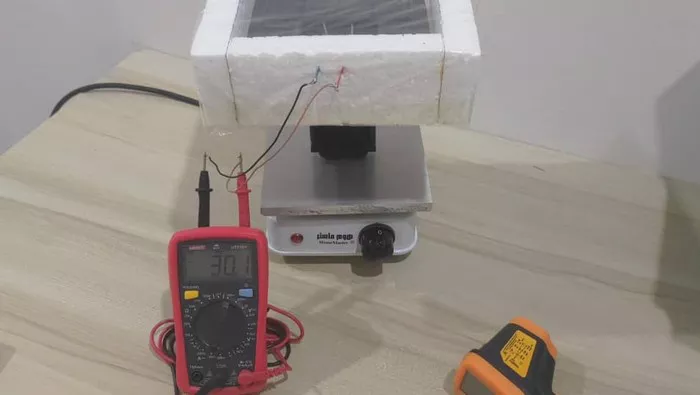A team of researchers from Multimedia University in Malaysia has unveiled an innovative hybrid system that combines photovoltaic (PV) panels with thermoelectric generators (TEGs), offering a cost-effective solution for off-grid, low-power applications. This new system is designed to generate electricity around the clock by utilizing the strengths of both technologies—solar power during the day and thermoelectric energy at night.
Thermoelectric generators convert heat into electricity through the Seebeck effect, which occurs when a temperature difference between two semiconductors generates a voltage. While TEGs are widely used in industrial settings to recover excess heat, their high cost and limited efficiency have hindered broader adoption. The new hybrid system aims to address these challenges, especially for nighttime power generation.
Enhanced Nighttime Efficiency
The research, led by Dr. Chan Kah Yoong, focuses on optimizing the TEG’s surface area and configuration to improve performance at night, when PV systems are inactive. “Previous studies have primarily concentrated on boosting daytime efficiency of PV-TEG systems, but our work specifically investigates how larger TEG areas and optimized setups can significantly increase nighttime power output,” Dr. Yoong explained in an interview with PV Magazine.
In their experiments, the researchers tested different TEG configurations attached to a polycrystalline PV cell, which generates a peak power of 1 W under typical conditions. The team explored various TEG sizes—3 cm x 3 cm, 4 cm x 4 cm, and two 4 cm x 4 cm TEGs connected in series—while simulating temperature differences using a controlled heat source.
Power Output Results
The results of the tests demonstrated a direct correlation between TEG size and power output. The 3 cm x 3 cm TEG generated up to 0.9 milliwatts (mW) when subjected to a temperature difference of 55°C, while the 4 cm x 4 cm TEG produced a maximum of 3.8 mW. The most powerful configuration, two 4 cm x 4 cm TEGs in series, delivered up to 7.7 mW, nearly double the output of a single 4 cm x 4 cm TEG.
In all three setups, the researchers observed minimal power output when the temperature difference was as low as 5°C. The 3 cm x 3 cm TEG showed a peak voltage of 114.9 V and a peak current of 8.67 A, while the 4 cm x 4 cm TEG produced 180.2 V with 21.5 A. The two TEGs connected in series generated a combined voltage of 340.4 V with a current of 21.5 A.
Potential for Scalability and Off-Grid Use
The team’s findings underscore the affordability and potential scalability of the hybrid PV-TEG system. If deployed on an average U.S. home with a rooftop area of 1,500 square feet, the system could produce an additional 375 W of power, primarily from the TEGs operating at night. Dr. Yoong emphasized the system’s versatility for small-scale applications, such as powering household devices like laptops, phone chargers, LED TVs, and lighting.
“This technology could be particularly beneficial for off-grid locations or as a supplementary power source for homes and small businesses, enabling continuous energy generation without reliance on external infrastructure,” Dr. Yoong noted.
The research was detailed in the study titled Solar-Based Nighttime Electric Power Generator Based on Radiative Cooling, published in Energy Reports. The development marks a significant step toward making sustainable, off-grid energy generation more accessible and affordable for everyday use.
Related topics:

